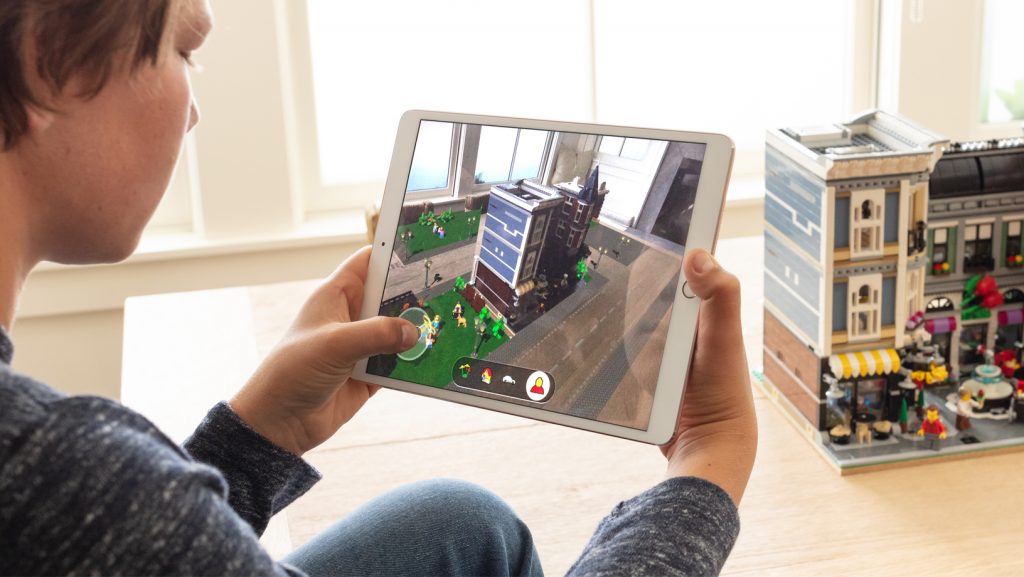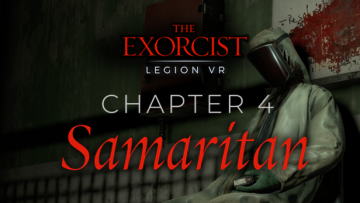
VR vs. AR vs. Creative Play
It was, I have decided, not the best week I’ve ever had. It started off on the Monday where I woke up drenched in sweat and not entirely sure where I was and who I was. Which, I can assure you, is pretty frightening. Going in and out of consciousness to the point you no longer can trust whether ‘here’ is reality or not – and that sounds like a topic for another occasion.
Tuesday I cannot recount that well, only that I spent most of it wracked with pain. Wednesdays traditionally I work the later shift as both Peter and Rebecca have social things they do in the evening which I was able to drag myself through but I had to wave the white flag midway through Thursday, consumed by a splitting headache, nausea, a stomach apparently practising a gymnastics floor routine and some bastard had in the middle of the night tilted the entire flat by twenty degrees or so making standing up an issue. So, I signed off, keeled over and slept… somewhere, I’m not even sure where. for about 7 hours in total. Waking up long enough to find I needed to go to bed again. All-in-all not the best of preludes to Friday where I was hosting friends before Saturday’s trip to the 2018 UK Games Expo.
I really was still not in the best of shape to go and deal with a vast people-filled space. My friends would have entirely understood if I chose not to go, but I wanted to for a couple of reasons. First: I’d spent money on the damn thing. Second however was a desire to see how augmented reality (AR) was being used within the realm of tabletop/board games. It was pretty amazing to see just how many different games there were out there. Long gone are the days where playing a board game basically just consisted of your Dad going to the cupboard and giving you the choice of Cluedo, Scrabble and Risk because the latter would be a great way to beat you.
We’ve seen board games turn to immersive technology, both virtual reality (VR) and augmented reality (AR) over the last few months to bring a new level of imagination to their play. There’s been the launch of Catan VR, something we’d been following on VRFocus for some time. There’s been Kickstarter projects such as Crime Shoots which have been in the news, whilst as recently as last week Ahoy Games revealed that Rummy, of all things, was getting the AR treatment. So at this big gathering of board game companies and aficionados it only made sense to have a look around and see just what was going on – and you know what I found?
Nothing.

Nope, not one solitary instance in all of that of immersive technology being implemented in some way. No virtual equivalents, no cards with fancy AR effects. Zip. Nada. Was it because it was a traditional audience? Was it because the imagination is still a far more powerful tool that immersive technology ever will be and board/card games are inherently a little bit about immersion in that sense? It was disappointing but I kind of understood why I didn’t find anything.
Contrast this with yesterday’s Day One at Apple’s WWDC event where after Google’s stony silence on immersive technology at Google I/O, Apple seemed ready to grab you by the lapels and shake you while screaming in your face about how awesome it was. Actually, Apple were pretty frisky all over, there was shots at Facebook, some serious shade flung at Google and Android. “It’s hard to say they really have a software update model.” scoffed Craig Federighi, a man who looks like a human version of Sam The Eagle from The Muppets – something I now entirely can’t unsee when looking at him.
But while, again Google and Apple’s take on how important immersive technology is to them is a topic for another day I was struck by the LEGO presentation which used ARKit 2 in order to bring a physical model to life.
Throughout the presentation LEGO were really keen to emphasise (i.e. repeat it to death) one phrase, that the use of AR was great because “It really opens up those creative play possibilities.”
No, it really doesn’t. Giving scripted stories and scenarios that happen with your toys is not opening up options it narrows them down. The imagination isn’t running free it you’re guiding it in a certain direction. In that instance I almost think the board game people are right by not taking it up immediately. Think of it this way, whilst I am not a player I am aware one of the great joys for players of Dungeons and Dragons is that you are in command and can (essentially) try anything in a game. Yet that game still has a script of sorts. It felt very different in the LEGO example. Its not like LEGO hasn’t had linear scripted experiences but here was different as it was kind of imposing it on the physical toy through AR. AR wasn’t used to ‘open up’ those “creative play possibilities”, rather give some approved ones. It felt like, yes, it gave a new viewpoint – and the way it used AR in this instance was impressive. But it also felt limiting – you can imagine whatever you like, before you do however, might we suggest imagining this?

LEGO’s ARKit 2 items are coming later this year and they look fun. I just hope the company remembers just why LEGO is fun in the first place. When you’re suggesting to kids how to imagine, repeatedly saying “it really opens up those creative play possibilities” doesn’t come across so good. In fact, it sounds pretty disconcerting. I seem to remember a movie about a children’s toy that had its bad guy tell everyone that “Let’s take extra care to follow the instructions” and make sure to have fun on Tuesdays at the designated time. Last thing LEGO wants is coming across a bit like that(!)
That movie was pretty cool though. Had a moral about freedom of play and freedom of imagination that seems pretty important under the circumstances. Seems like something that should be kept in mind.
Man, I wish I could remember the name of the toy the movie was about…
This article was originally written by the author for VRFocus.

![[ID: 4dvM8L2QvKE] Youtube Automatic](https://lastminutecontinue.com/wp-content/uploads/id-4dvm8l2qvke-youtube-automatic-60x60.jpg)




